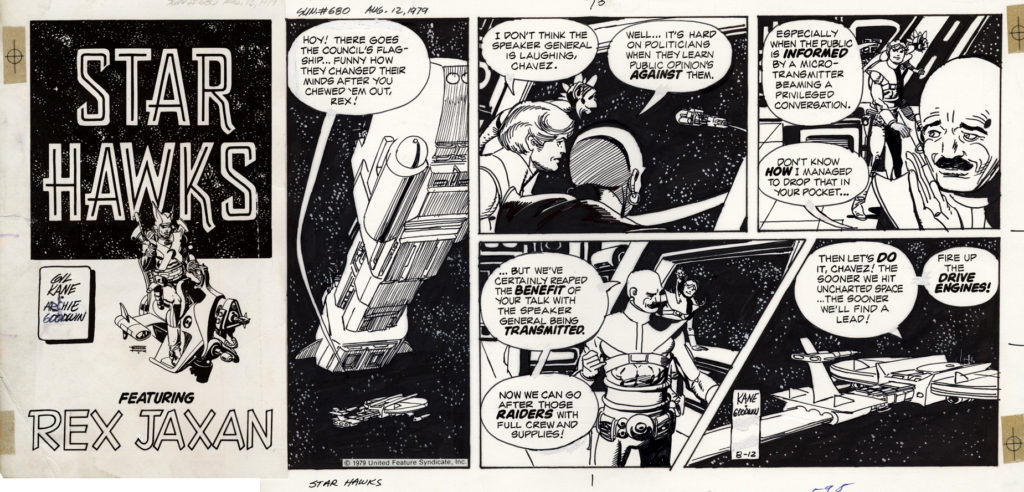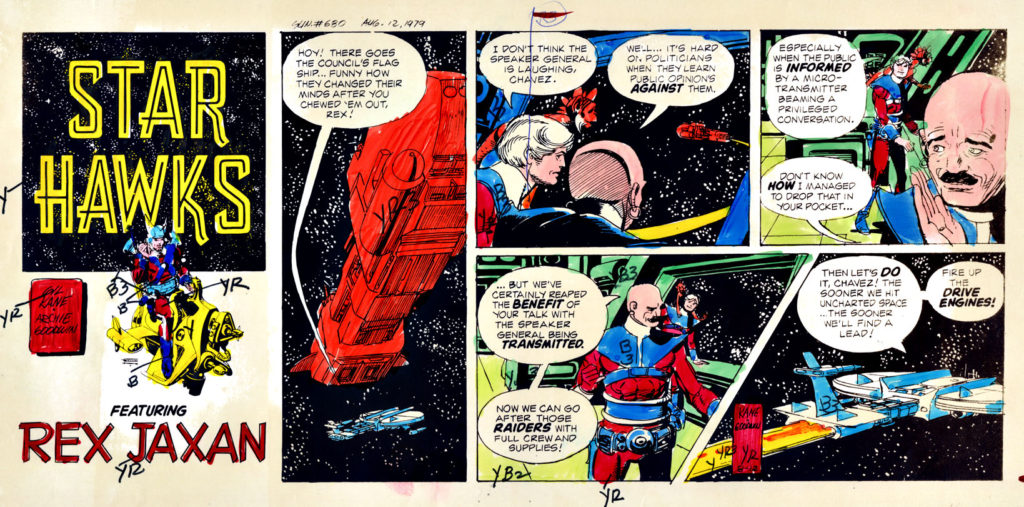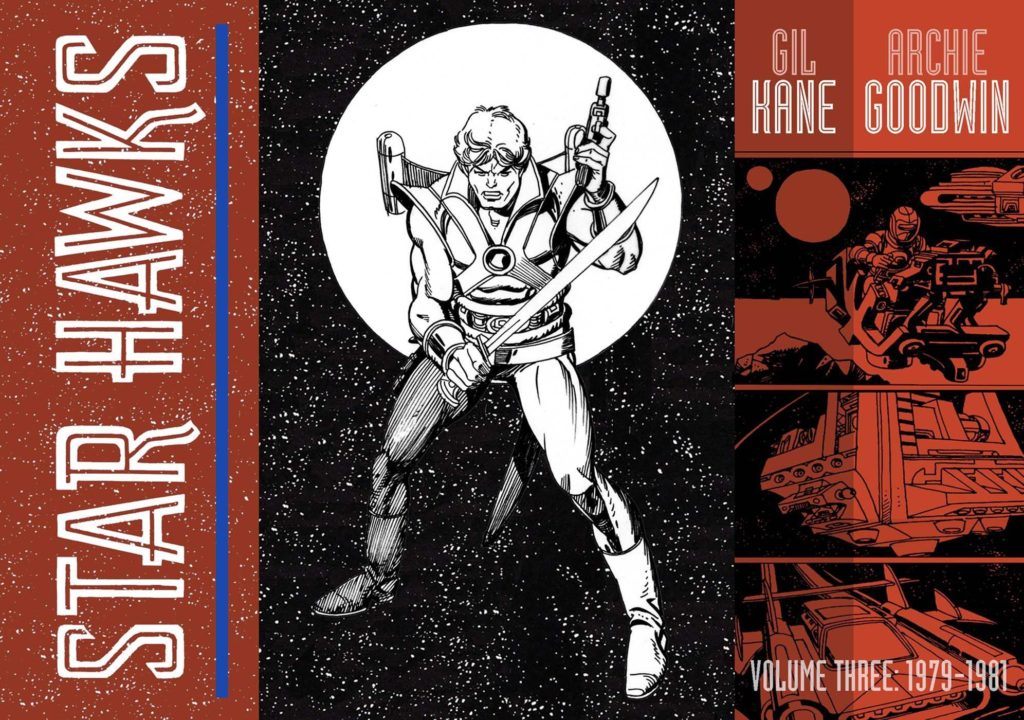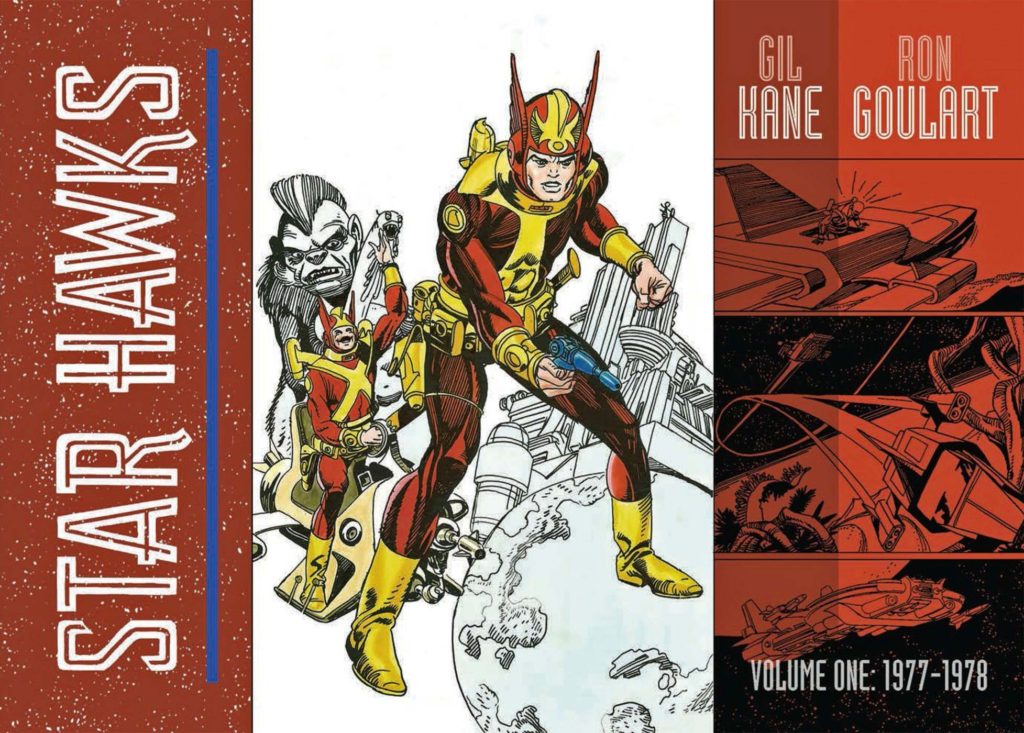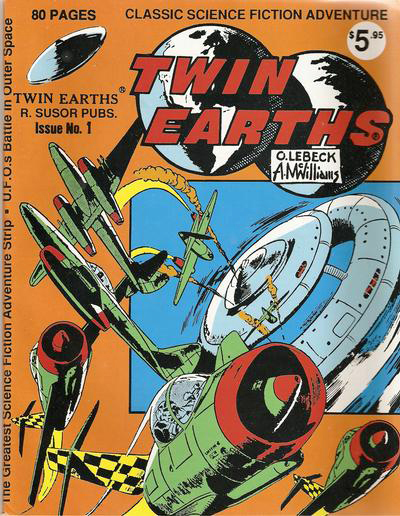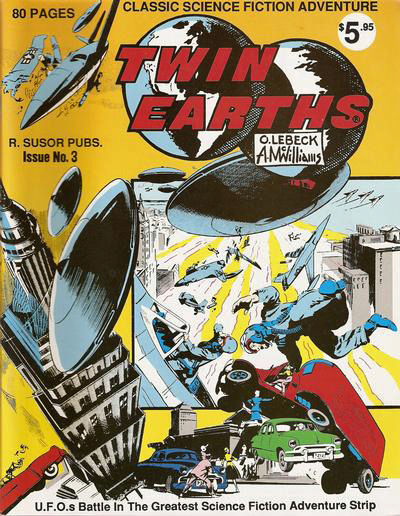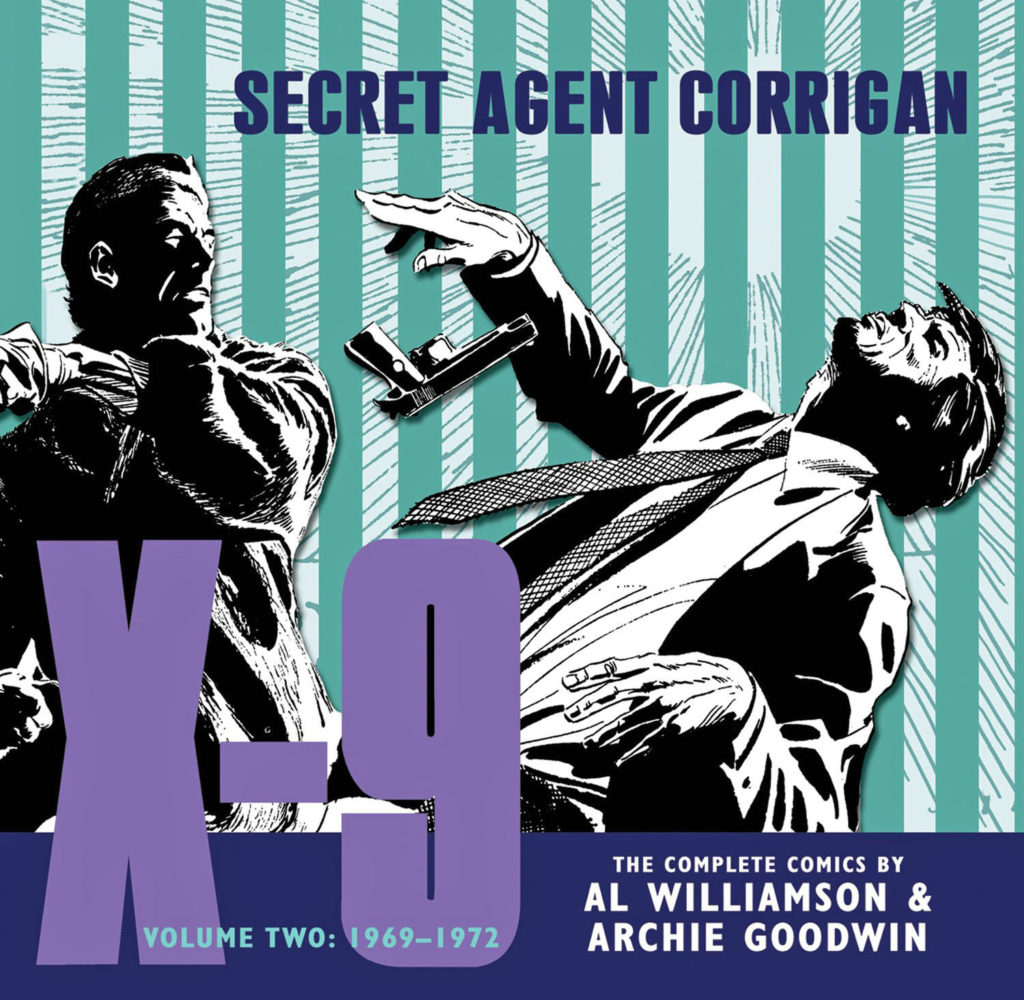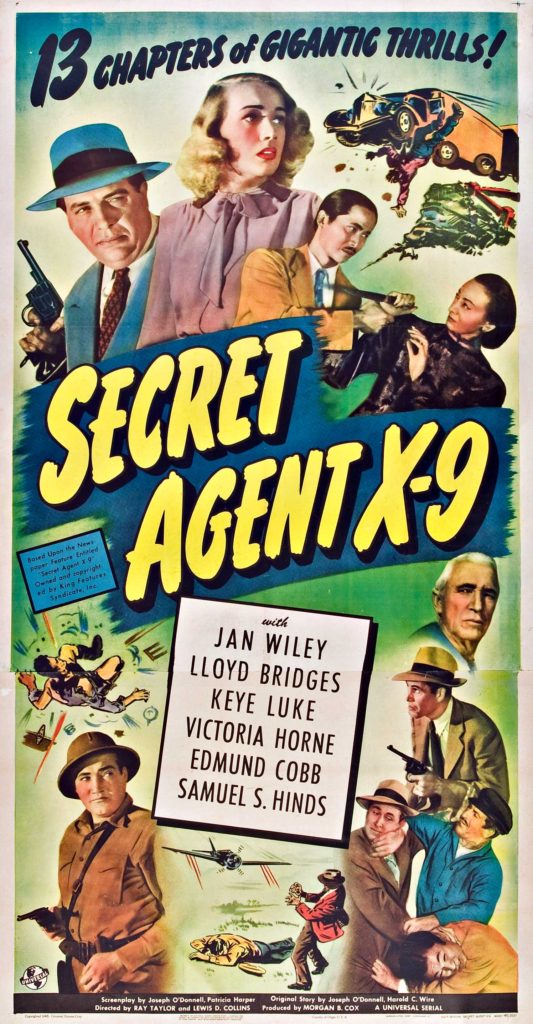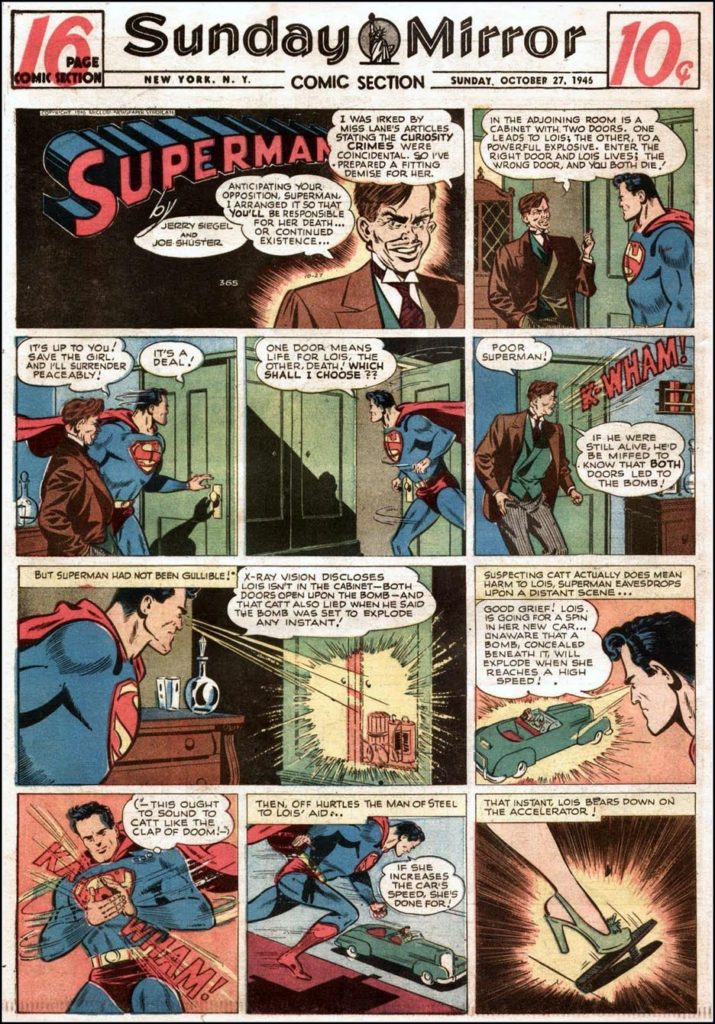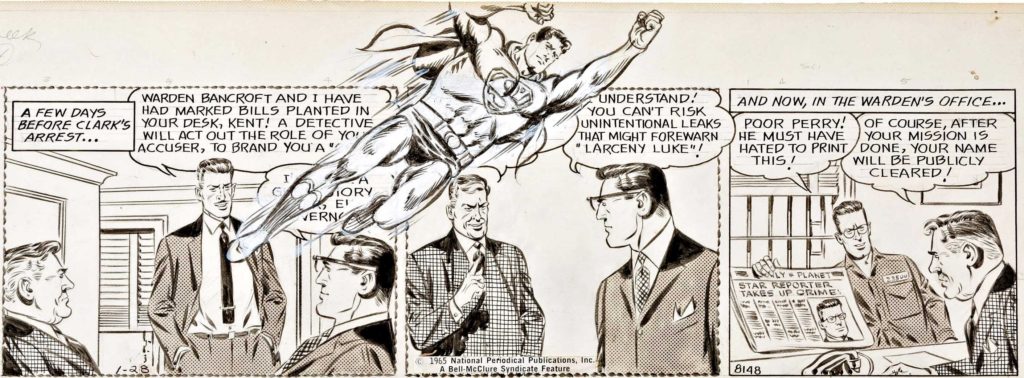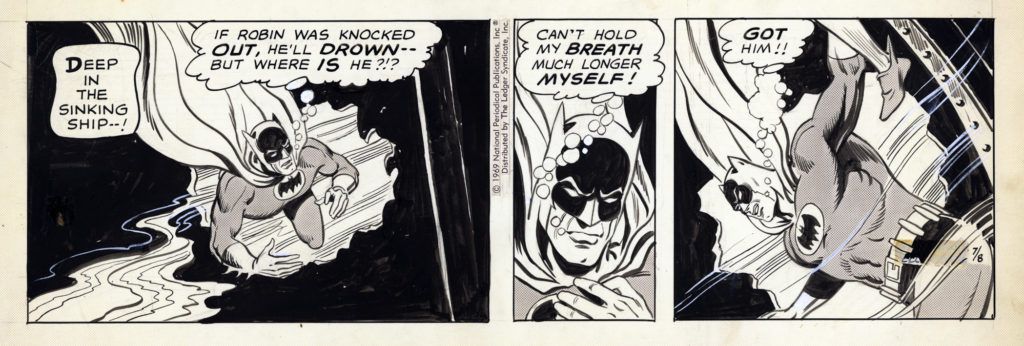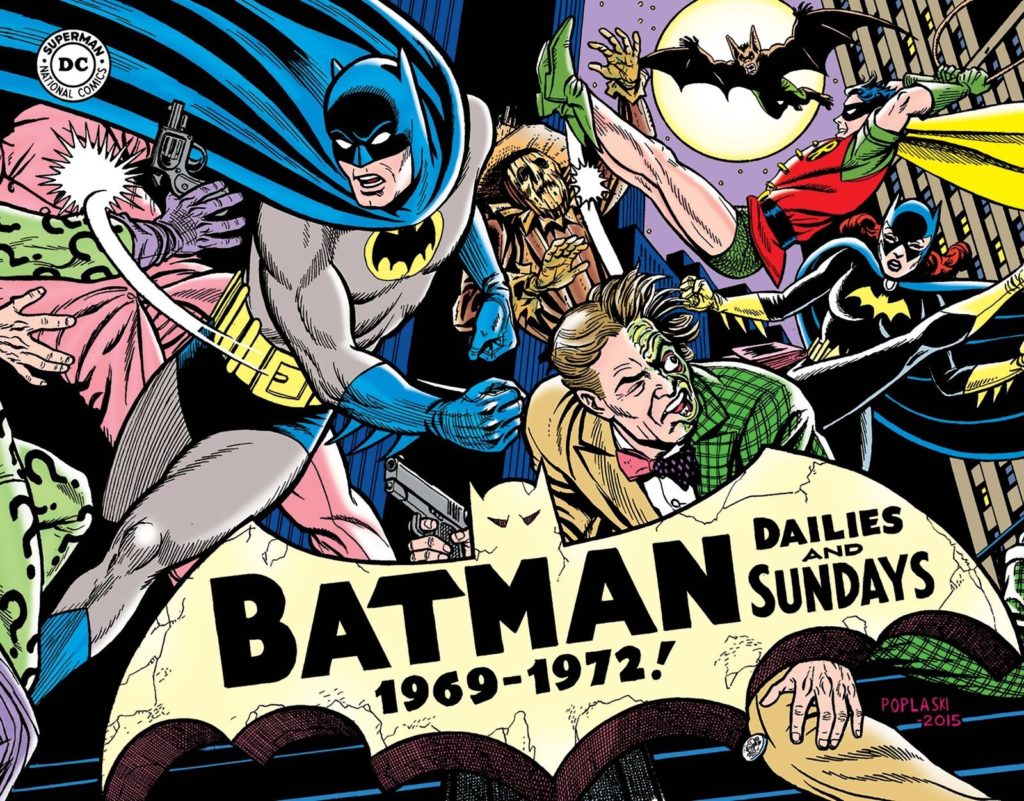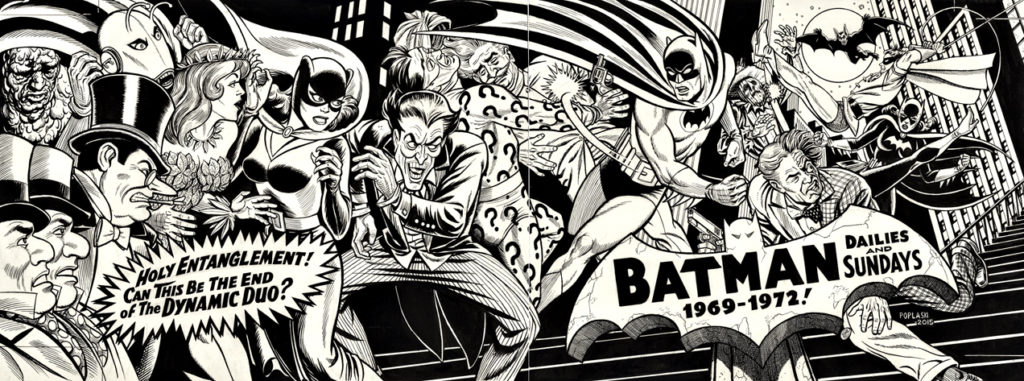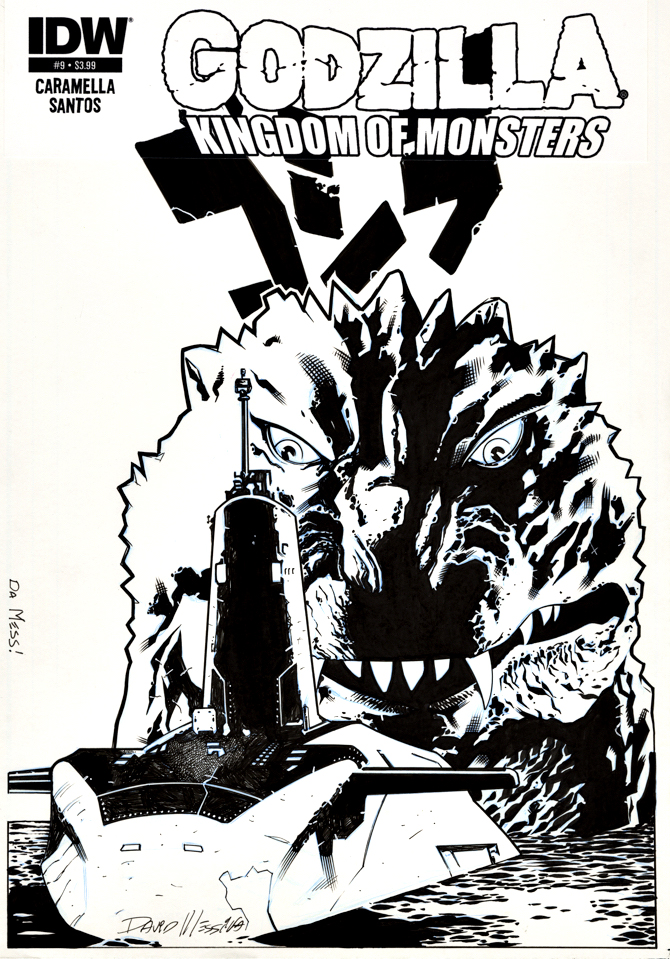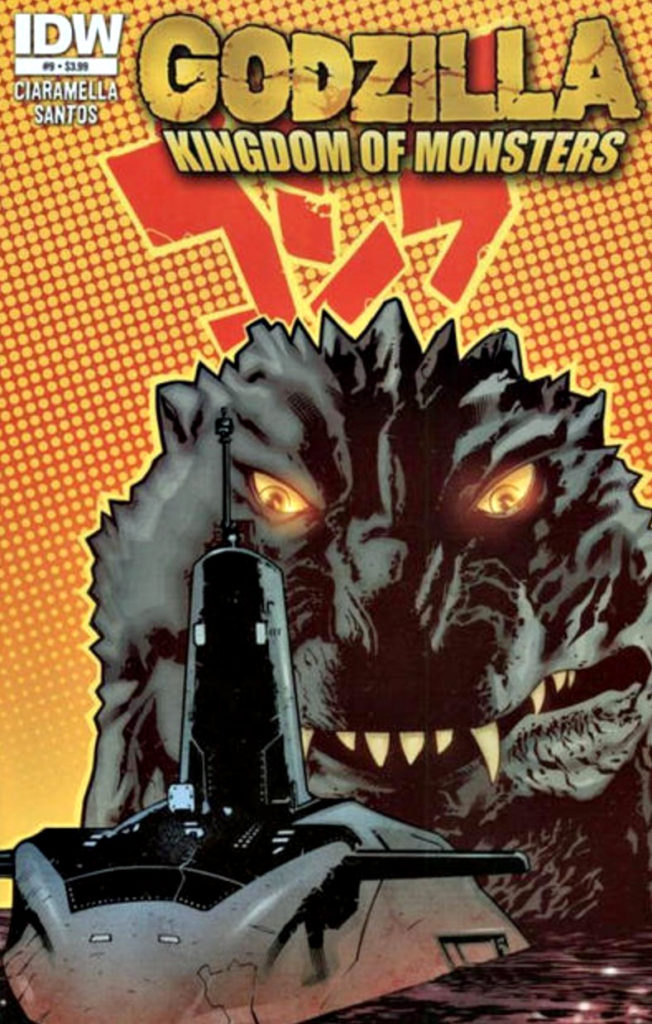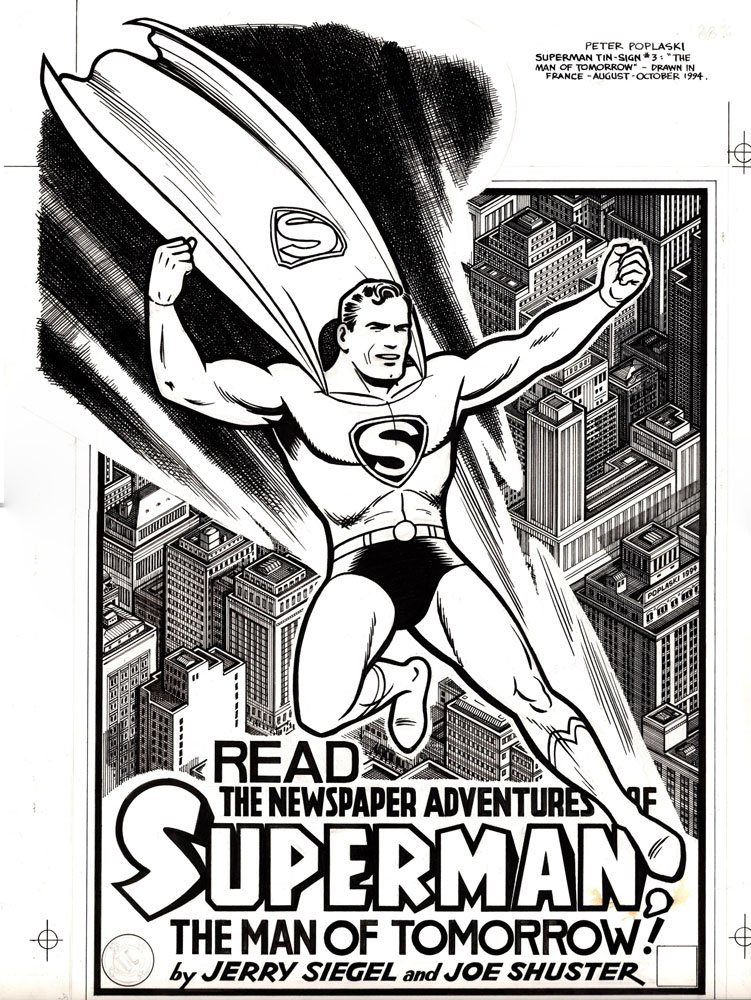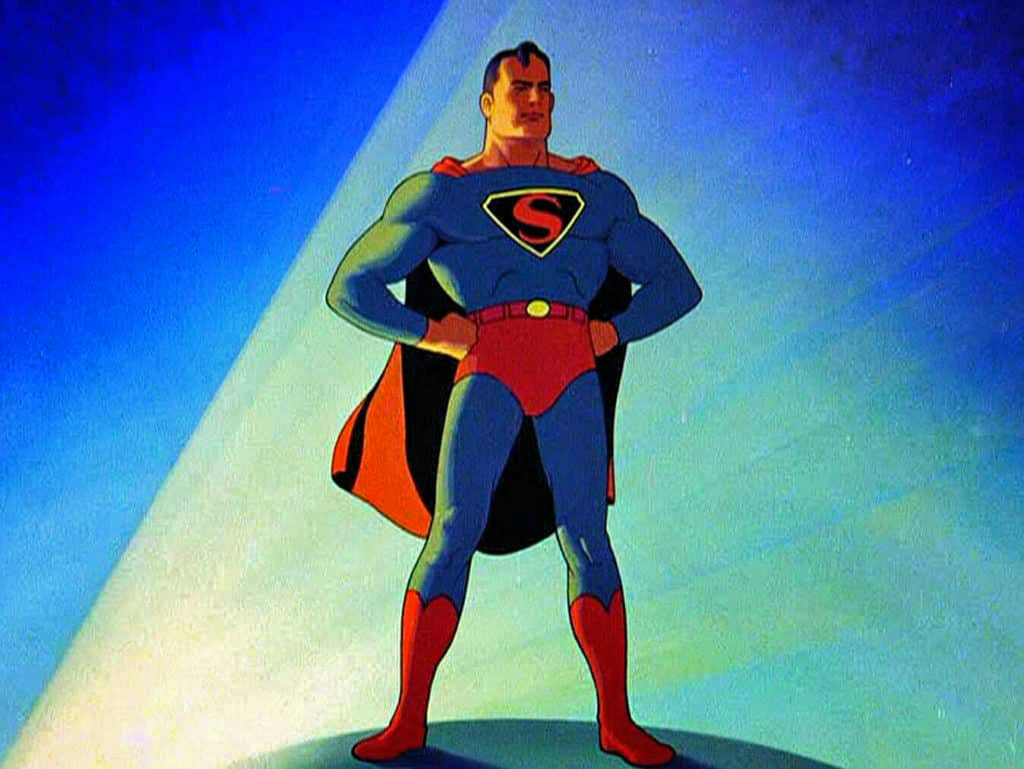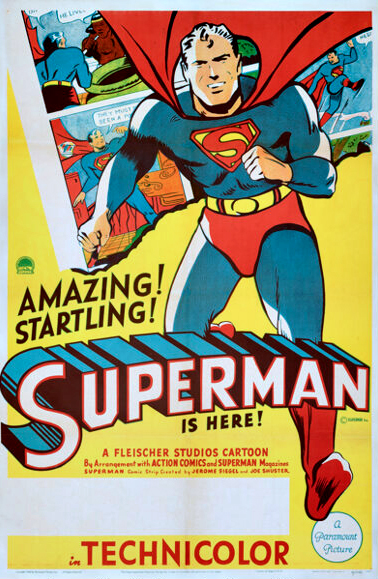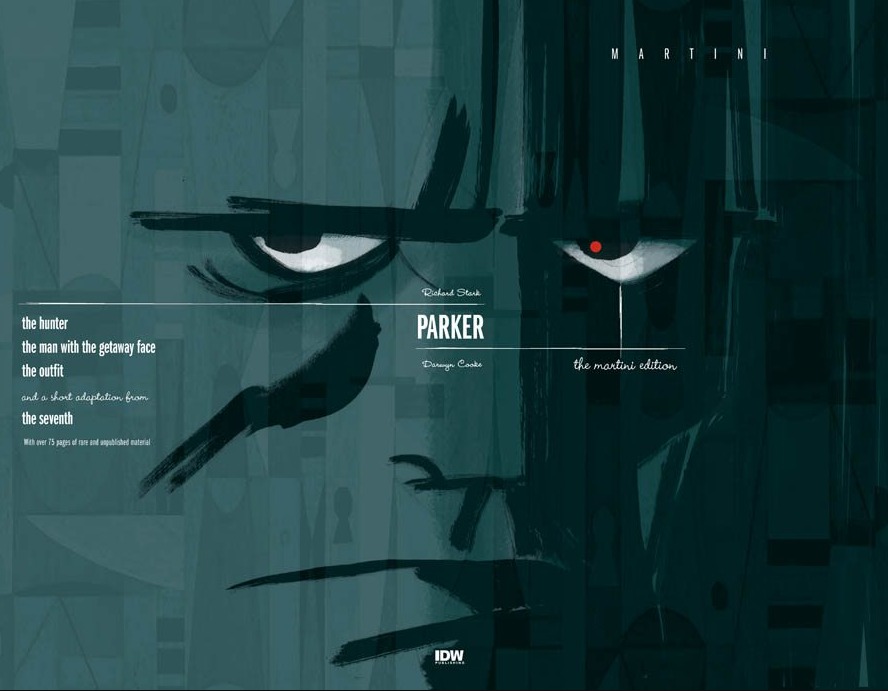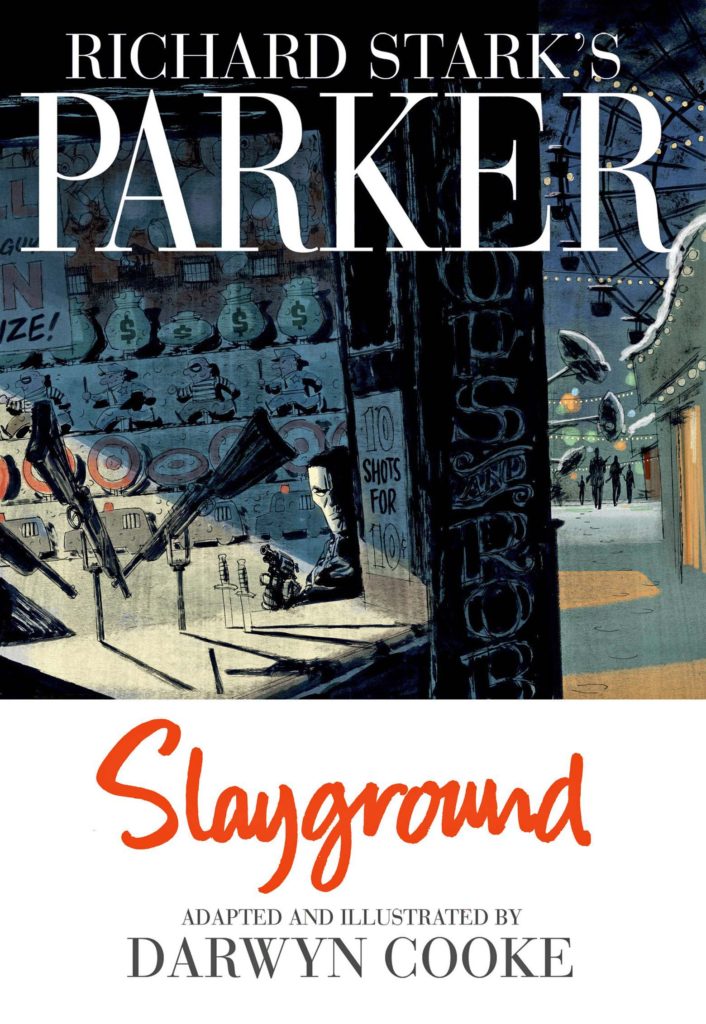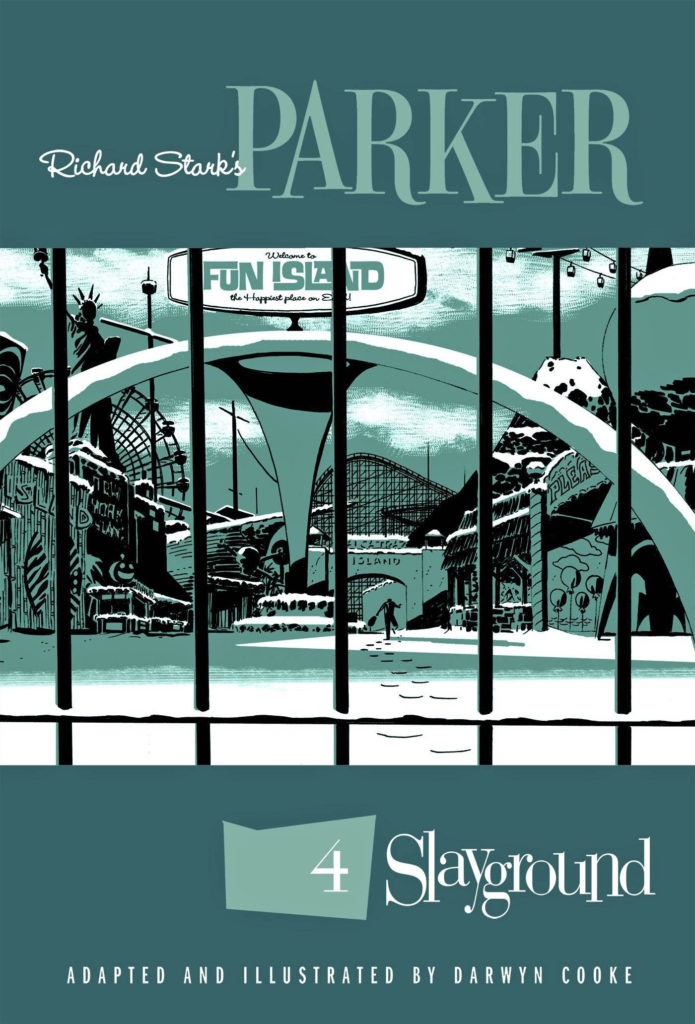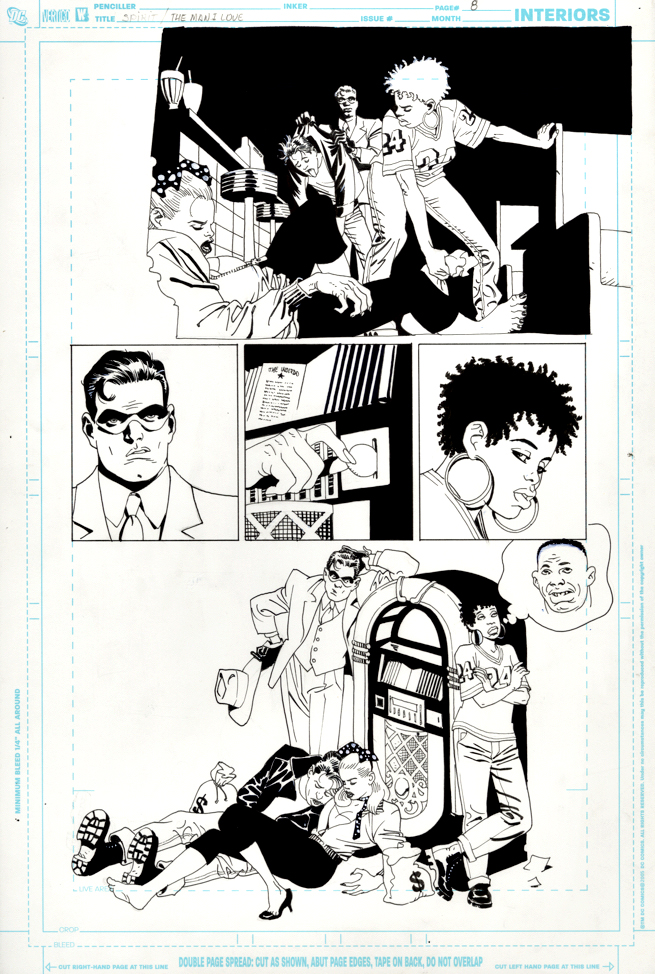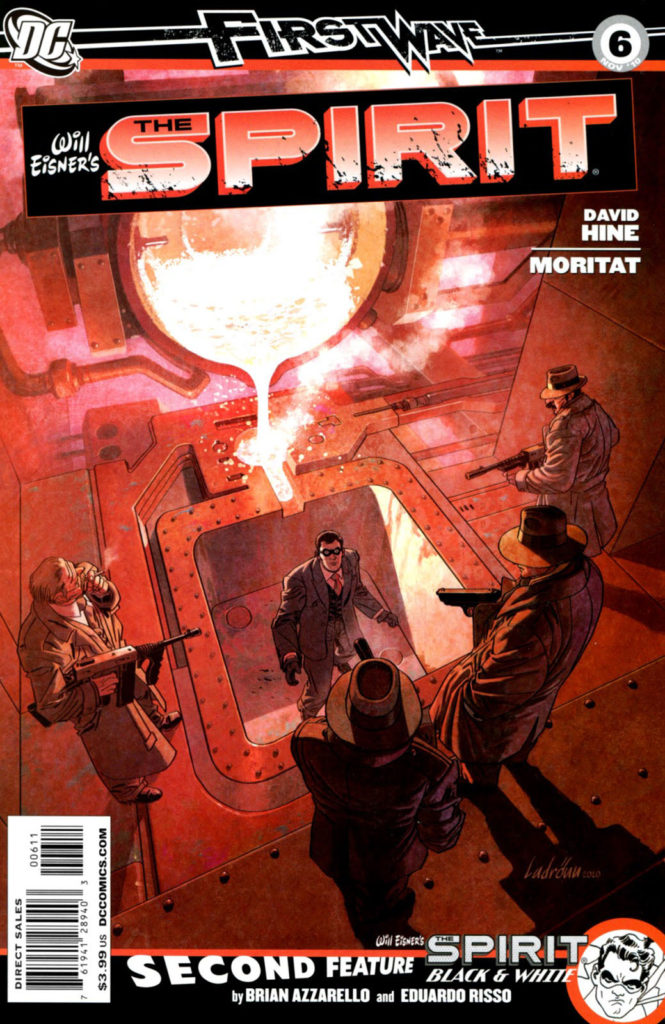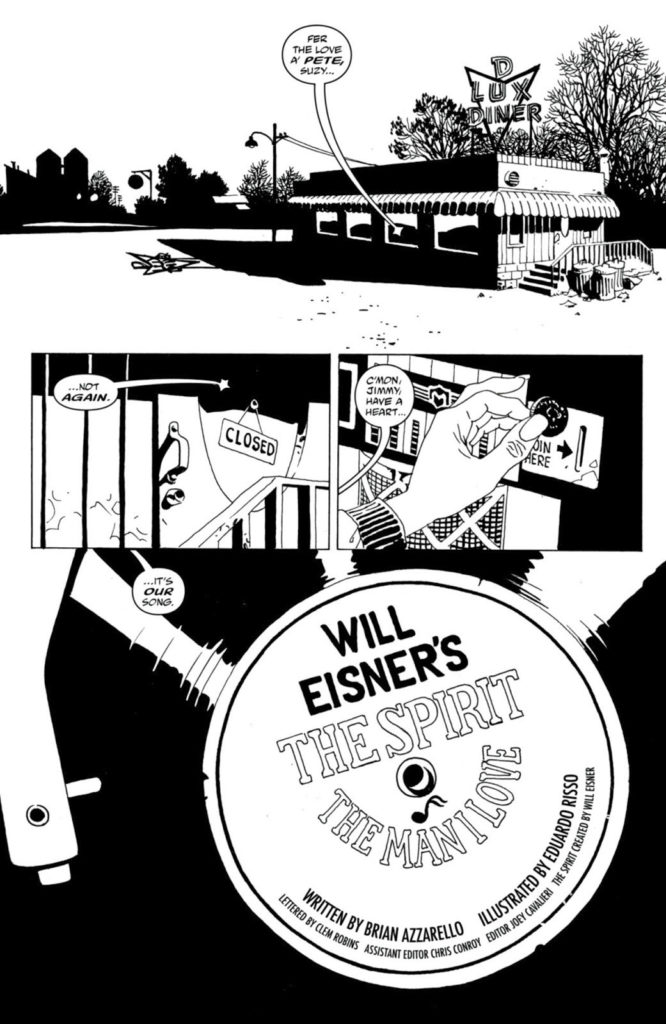Gil Kane — The Star Wars Effect
Star Hawks, Sunday Strip, August 12, 1979
Here is a nice (Sunday) example of Ron Goulart’s and Gil Kane’s Star Hawks, the short-lived SF adventure strip which ran from 1977-1981. (Extra nice in that it includes both the strip header and the color proof.)
“Inspired – as so many things were in the late 70s – by the tremendous success of Star Wars, the newspaper feature syndicate NEA (Newspaper Enterprise Association) got it into their heads that a space opera comic strip that evoked the cosmic high adventure and swashbuckling derring-do of George Lucas’ movie might be a popular addition to the nation’s comics pages.” — Christopher Mills
Perhaps most interesting thing about the strip was the that the initial dailies were double tier as well as the Sunday’s — a risky gambit that allowed Kane to showcase his strengths in storytelling and layout. Unfortunately, newspapers weren’t in love with devoting that much real estate to the quirky SF adventure, and it ultimately dropped to the traditional one-tier.
Goulart ultimately left the strip and Kane enlisted frequent collaborator Archie Goodwin, who wrote the one above. He also left after a few arcs, and Roger Mackenzie wrapped things up.
All of the series is available in a three-volume set from The Library of American Comics and IDW Publishing.
Worth every penny, but of course, I’m biased.
Continuing our month long celebration of the great adventure comic strips:
Week 1: Superheroes
Week 2: Detectives
Week 3: SF
Week 4: Comic Book Giants

